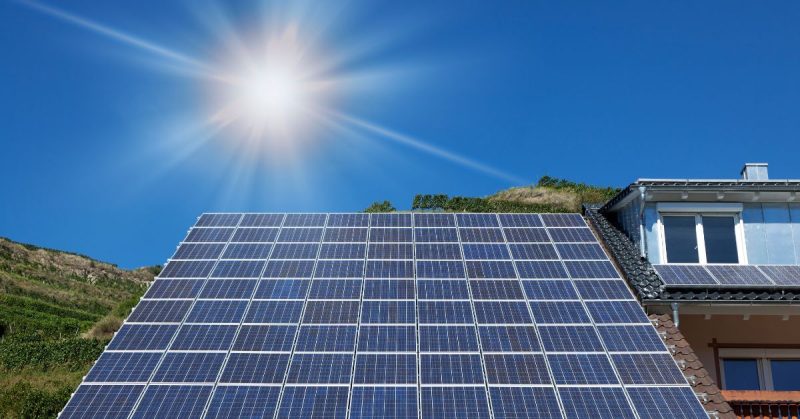
The Driving Forces Behind Renewable Energy Growth in the GCC
Balancing Economic Development with Sustainability for a Greener Future
The GCC’s Commitment to a Sustainable Future
As global warming continues to pose a significant challenge, the Gulf Cooperation Council (GCC) nations have taken decisive steps toward mitigating climate change. Despite contributing relatively less to global carbon emissions compared to industrialized nations, the GCC ranks among the highest in per-capita emissions, according to the UN Framework Convention on Climate Change.
Rapid urbanization, rising populations, and the construction of larger buildings and malls are accelerating energy consumption. Without intervention, greenhouse gas emissions will continue to soar. Climate models predict that by 2030, the region’s average temperature will rise by 1.6°C, with summer temperatures regularly reaching 50°C. In extreme scenarios, rising sea levels could submerge nearly 20% of Qatar’s landmass over the next century, posing severe risks to infrastructure and livelihoods.
A Shift in Regional Energy Policy
Following the 2015 Climate Conference, GCC nations announced ambitious renewable energy targets, marking a historic policy shift. Recognizing the need to diversify energy sources, governments have introduced subsidy reforms, energy conservation strategies, and efficiency improvements. These initiatives aim to lower the region’s per capita energy consumption while reducing reliance on oil and gas revenues.
The central challenge remains: how can the GCC balance energy production and economic growth while reducing carbon emissions?
The Path to a Renewable Energy Economy
Unlike other regions, the transition to renewables in the GCC is not hindered by low oil prices but by the need for robust regulatory frameworks and market competitiveness. The UAE and Saudi Arabia’s commitment to Mission Innovation—a global initiative to double renewable energy research and development—demonstrates their intent to lead in sustainability. However, contradictions remain, as seen in Dubai’s 25-year agreement to develop a 2.4GW coal-fired power plant just months after joining the initiative.
For meaningful progress, the GCC must embrace a broader shift toward energy efficiency and away from unsustainable consumption. Historically reliant on government subsidies, the public must adapt to a future where traditional energy sources become costlier, encouraging investment in renewables.
Overcoming Challenges with Actionable Solutions
The transition to renewable energy faces regulatory barriers, insufficient financial incentives, and limited private sector involvement. However, governments can accelerate the shift through key initiatives, including:
- Creating a competitive energy market with diverse, local renewable providers.
- Prioritizing energy efficiency across industries, housing, and transportation.
- Investing in R&D for sustainable technologies, particularly cooling systems, which account for up to 75% of GCC energy consumption in peak summer.
- Expanding public transportation networks to reduce reliance on personal vehicles.
- Enhancing technical expertise to implement and integrate renewable solutions.
- Developing carbon capture and reuse facilities to curb emissions.
- Improving water and wastewater management to optimize resource use.
- Supporting reforestation and desertification control efforts to mitigate environmental degradation.
The success of these initiatives will determine the GCC’s ability to transition toward a sustainable energy future, benefiting both the environment and future generations.
A Global Movement Toward Clean Energy
The ratification of the Paris Climate Agreement by the world’s largest carbon emitters, the United States and China, underscores the growing commitment to sustainability. The global shift away from fossil fuels is accelerating, and the GCC is poised to play a pivotal role in this transformation.
The era of limited carbon reduction targets is coming to an end. As the world’s appetite for oil declines faster than anticipated, the GCC has the opportunity to lead the transition, ensuring a cleaner, more resilient future for generations to come.
FAQs: Renewable Energy Growth in the GCC
The GCC relies heavily on fossil fuels for energy production, but renewable energy offers a sustainable alternative that reduces carbon emissions, conserves resources, and ensures long-term energy security.
Key factors include government commitments to climate goals, economic diversification efforts, energy efficiency policies, rising energy demand, and advancements in solar and wind technologies.
The UAE and Saudi Arabia are at the forefront, investing heavily in solar and wind power projects. The UAE’s Mohammed bin Rashid Al Maktoum Solar Park and Saudi Arabia’s NEOM Green Hydrogen Project are among the largest in the world.
As of recent years, the region has collectively installed several gigawatts (GW) of renewable capacity, with solar energy leading the way. Governments aim to significantly increase this by 2030.
Challenges include regulatory barriers, dependency on fossil fuel subsidies, limited grid infrastructure for renewables, and the need for more private sector involvement.

Contact Us for More Details
Fill the Form Below and We Will Get Back to You Within 24 Hours
